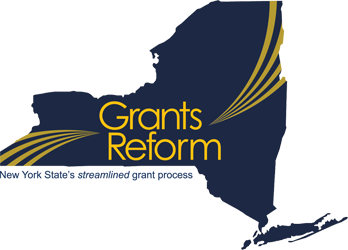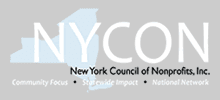| ||||||||||||||||
Tuesday, November 19, 2013
Policy Poll: Government Contracting & Prompt Payment Practices
Tuesday, November 12, 2013
Upcoming Events & Trainings
|
New Report Addresses Opportunities for Funders That Collaborate
 | |
FOR IMMEDIATE RELEASE
CONTACT: | |
Cheryl Loe
Communications Project Manager The Foundation Center (888) 356-0354 ext. 701 communications@ foundationcenter.org |
Noah Rimland Flower
Monitor Institute, a part of Deloitte Consulting LLP (415) 932-5345 nflower@deloitte.com |
New Report Addresses Opportunities for Funders That Collaborate
Companion "Interactive Tool Finder" Aids the Search for
| |
Locally, state's health care exchange going well
Nationally, the Affordable Care Act’s website problems have caused numerous headaches for consumers — and politicians.
Locally, however, it’s a different story.
Three area nonprofits are trying to guide consumers through the state’s health plan exchange.
Two say things are going well. The third is stuck in limbo waiting for state action.
“It’s going great,” said Steve Wood, community health coordinator for ACR Health where state-funded navigators have helped 120 people sign up for health coverage in the agency’s nine-county service area since the state health plan exchange opened Oct. 1. And the nonprofit has 200 appointments scheduled this month, he said.
“It’s really going quite well,” agreed Diana Haldenwang, executive director of the Mohawk Valley Perinatal Network. The network’s state-funded navigators have had more than 100 appointments with people looking at plans, helped more people fill out paper applications for Medicaid, fielded more than 450 phone calls and scheduled another 100 appointments in Oneida and Madison counties, she said.
“We knew we’d be busy, but I think I was a little surprised by the sheer volume of people and the calls that we’re getting,” Haldenwang said.
At the Utica Community Health Center, though, things are moving slowly. The center mostly serves patients without insurance who should benefit the most from the Affordable Care Act and the tax subsidies it offers to help people buy health plans, said Janine Carzo, chief operations officer of Regional Primary Care Network, which oversees the center.
The act requires everyone to enroll in a health plan by Jan. 1.
So far, though, the center’s federally funded certified application counselors have helped only a few consumers. That’s because one counselor, who trained the first week of October, didn’t receive her portal password from the state until Nov. 1, Carzo said. She did help a few people who signed onto the exchange on their own, but the center was waiting for the password to advertise the service.
The staff has a list of patients who should qualify for Medicaid under its expansion next year and many other patients will qualify for subsidies, she said. Now, the advertising will begin.
A second counselor, who was hired in September, didn’t get into a state training session until this week and will have to wait for her password, Carzo said.
For Haldenwang, the biggest drawback has been consumer confusion. A few seniors have called, not realizing people on Medicare can’t use the exchange, she said.
CLICK HERE FOR ARTICLE LINK
Thursday, November 7, 2013
Utica United and nonprofit push for neighborhood teen centers
UTICA —
As part of a push to help at-risk youth, the Utica United party wants to open a teen center in each of the city's six wards.During a press conference on Thursday, the party announced it planned to team with Utica Youths and Families to help at-risk youth by providing them with centers for life skills and counseling.Titled the Vacant Property Teen Initiative, the idea is to buy homes through the Urban Renewal Agency, rehab them and work with local non-profits to find staffs to work the centers, said Bruce Martin, co-founder of Youth & Families.“One of the things we're looking to do is to extend our services to this organization,” he said. “To get them into a positive environment, to get them out of a negative area.”
The program will cost money but is worth it compared to the savings it brings the taxpayers by re-directing at-risk youth, said at-large candidate Sonia Martinez “The program is going to cost about $400,000,” she said. “In Utica's Latino community our youth have been suffering from a lack of role models. It will show the youth of Utica you can have a plan and follow it to fruition. Isn't that the American dream?”The funding picture and who will run the centers is unclear but the program could use a mix of existing tax dollars and grants according to organizers.
The program will cost money but is worth it compared to the savings it brings the taxpayers by re-directing at-risk youth, said at-large candidate Sonia Martinez “The program is going to cost about $400,000,” she said. “In Utica's Latino community our youth have been suffering from a lack of role models. It will show the youth of Utica you can have a plan and follow it to fruition. Isn't that the American dream?”The funding picture and who will run the centers is unclear but the program could use a mix of existing tax dollars and grants according to organizers.
CLICK FOR ARTICLE LINK
Is NYC’s DeBlasio Really a Threat to Nonprofits? Or to the Status Quo?

Some nonprofits in the nation’s largest city are worried about the probable election of Bill de Blasio as New York’s next mayor because of his potential impact on philanthropy and social service providers there, and two recent media pieces are a reflection of that. But I might add that the operating word in that last sentence is “some.” DeBlasio has strong ideas on many topics, such as charter schools, as NPQ has reported previously, and the mayor of New York has an outsized influence on funding for the local nonprofit sector as well as on public policies that impact them. But does he pose a threat to the nonprofit sector, or to the status quo of the nonprofit sector, and to whose benefit? We’ll be interested to hear from our colleagues in New York on the matter.
“‘This is why we can’t have nice things,’ New Yorkers might have muttered when they heard the news: Bill de Blasio, a shoo-in to be elected mayor next month, supports a plan to gut one of New York City’s most successful policy innovations of the past three decades,” says Evan Sparks in a blog post on the Weekly Standard website, entitled “Would-Be New York City Mayor Would Gut Central Park.”
Sparks is a contributing editor at Philanthropy magazine. He is referring to de Blasio’s support of a plan to redistribute money from Central Park’s operating budget to other, smaller parks throughout the city, not by moving money around within the city’s parks budget, but through a proposal “to raid the assets of the private nonprofit group that runs Central Park.” This was previously reported upon in another NPQ newswire.
The proposal is a state senate bill that would create a new “Neighborhood Parks Alliance” to redirect money to city parks considered neglected. The money would come from management conservancies like the Central Park Conservancy, the High Line, and other private conservancies with operating budgets over $5 million, who would be required to surrender 20 percent of their operating budgets. Sparks doubts the plan to seek funding from private, nonprofit groups would pass constitutional muster, but if it did, he says the result would be “dreadful for all parks—and philanthropy—in New York City.”
The Central Park Conservancy took on the task of reversing decades of physical neglect and social decay in the 1970s. The idea was that Central Park needed more than contributions from rich Manhattanites; it also needed new management, independent from the city’s parks bureaucracy. The conservancy was eventually awarded a long-term contract by the city to manage the park—the city pays a management fee to the conservancy and provides public safety, while the conservancy raises the large majority of its budget and employs 90 percent of the park’s staff. Everyone acknowledges that Central Park has been transformed by this arrangement.
The Central Park Conservancy inspired similar efforts throughout the city and across the country, especially for center-city parks with historic landmarks, complex landscaping, athletic facilities, performance venues, zoos, food and beverage services, etc. Conservancies are also good at generating funds and interest, and most park advocates say that the conservancy model has supported a renaissance of urban green space. Donors have come through in big numbers, and Sparks says that money has become a target for de Blasio, who has been quoted as saying that “some of that has to be moved to where the need is greatest, in neighborhood parks that are really suffering.”
Sparks and others don’t think de Blasio’s plan will work; he says Central Park attracts donors because it serves so many people from so many walks of life, and people want to give to a particular park. He calls the proposal “a tacit 20 percent tax on all gifts to New York’s big park conservancies.” He also calls it “an assault on the principle of philanthropic freedom—the liberty that all Americans have always enjoyed to choose the objects of their private giving.
By endorsing this plan, de Blasio is substituting his policy preferences for the charitable choices of thousands.” He also thinks the parks bill would cut off future conservancy efforts, something a number of conservancy leaders agree with. But, open space equity advocates from those neighborhoods with “suffering” parks support the idea.
Meanwhile, Adam Dickter, assistant managing editor of New York’s Jewish Week, delves into de Blasio’s track record with issues of interest to the Jewish community, particularly the ultra-Orthodox, who comprise a growing proportion of the city’s Jewish population, both in terms of numbers and influence.
“A Mayor de Blasio, the first Democrat to hold office since 1993, will also encounter pressures from Jewish groups based on campaign positions he’s taken,” said the article, continuing that “others will remember his support for day care vouchers, eliminated by [outgoing Mayor Mike] Bloomberg, that have heavily assisted large struggling Orthodox families. He has also said he’d be open to ways of helping religious and other private schools get more public funding, if it doesn’t conflict with the law.”
Social service organizations all over the city will be looking at how their contracting processes may change. The Bloomberg administration’s strict businesslike regulations regarding contracting with the city rankled Latino nonprofit leaders (NPQ had a newswire on this matter, as well).
But the paper reports that de Blasio is a major critic of the councilmember earmarking process for specific organizations because of corruption, and has called for that system to be scrapped. How that plays out depends on who becomes the Council’s next speaker. This uncertainty is causing anxiety within the Jewish social service network at a time when some programs have been frozen because of a state probe of misappropriated funds at the Metropolitan Council on Jewish Poverty.
Subscribe to:
Comments (Atom)






















